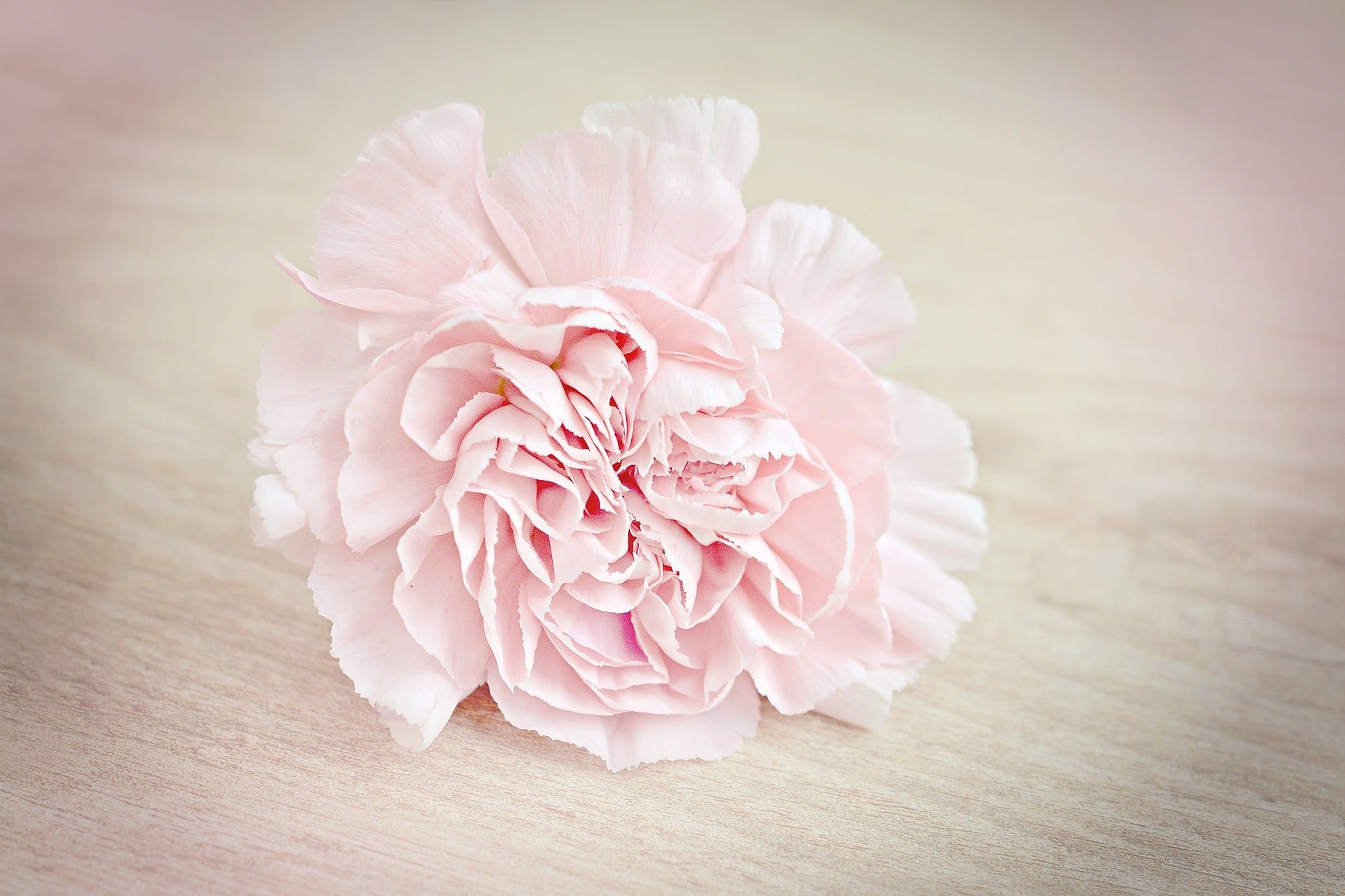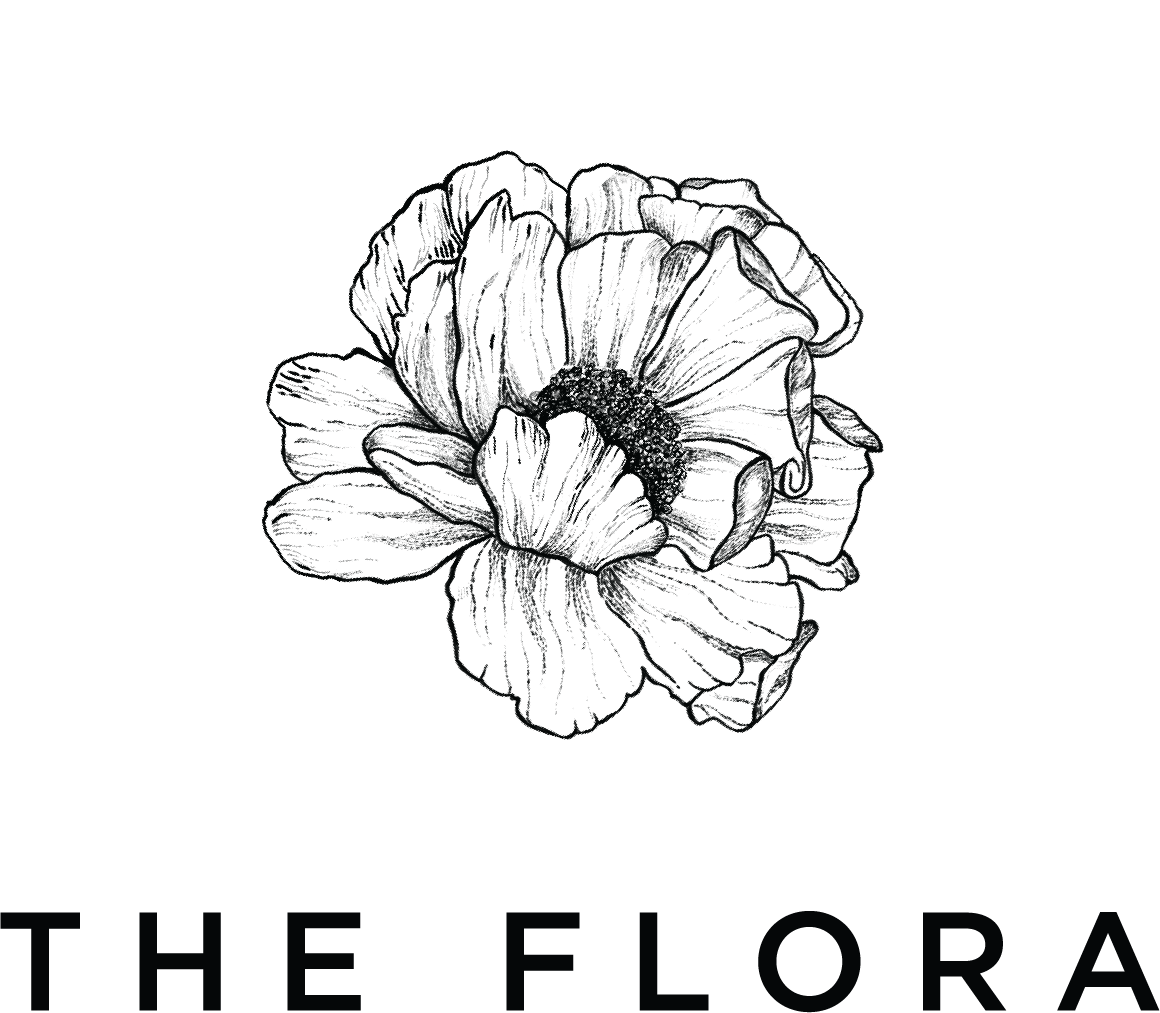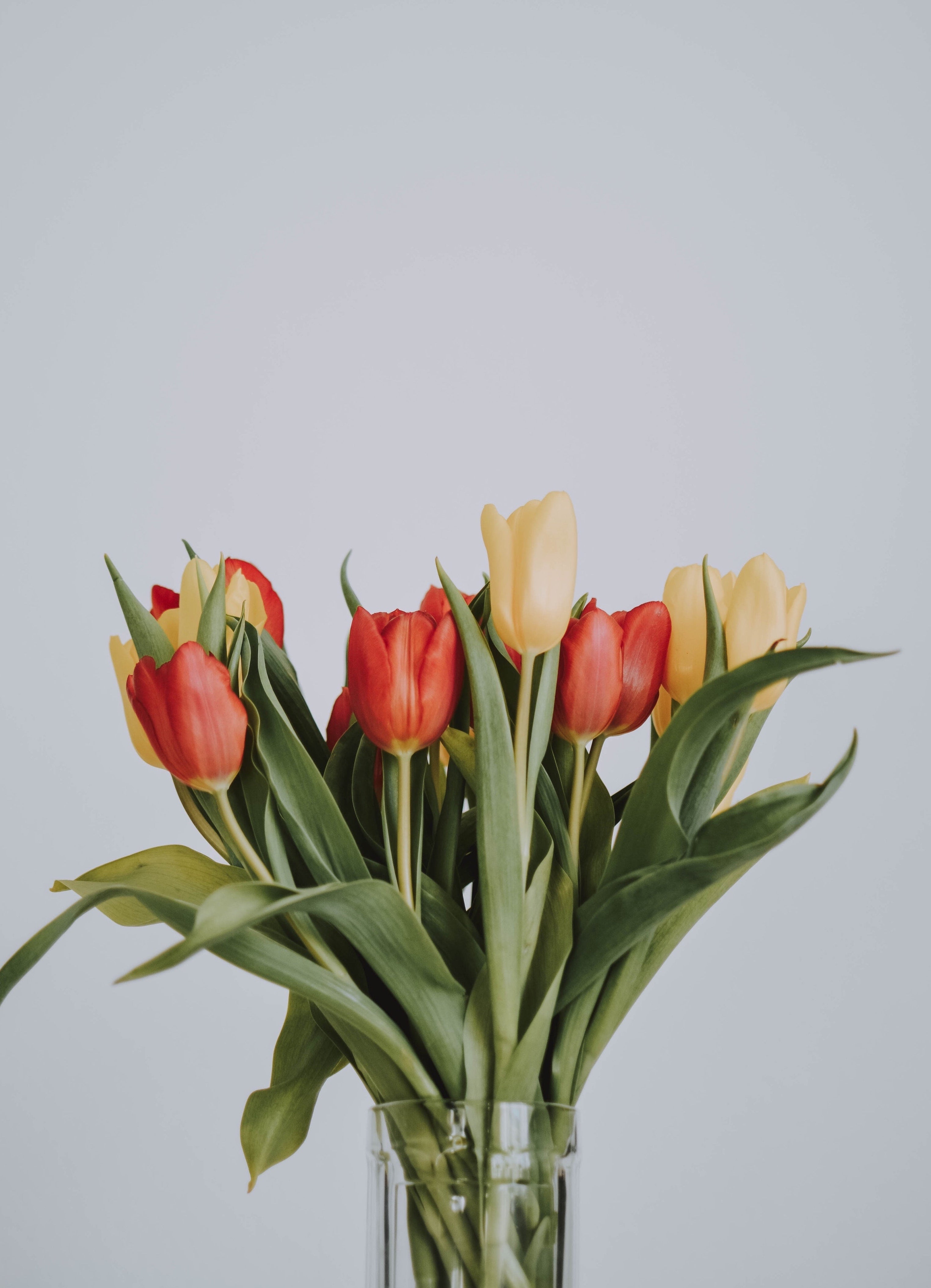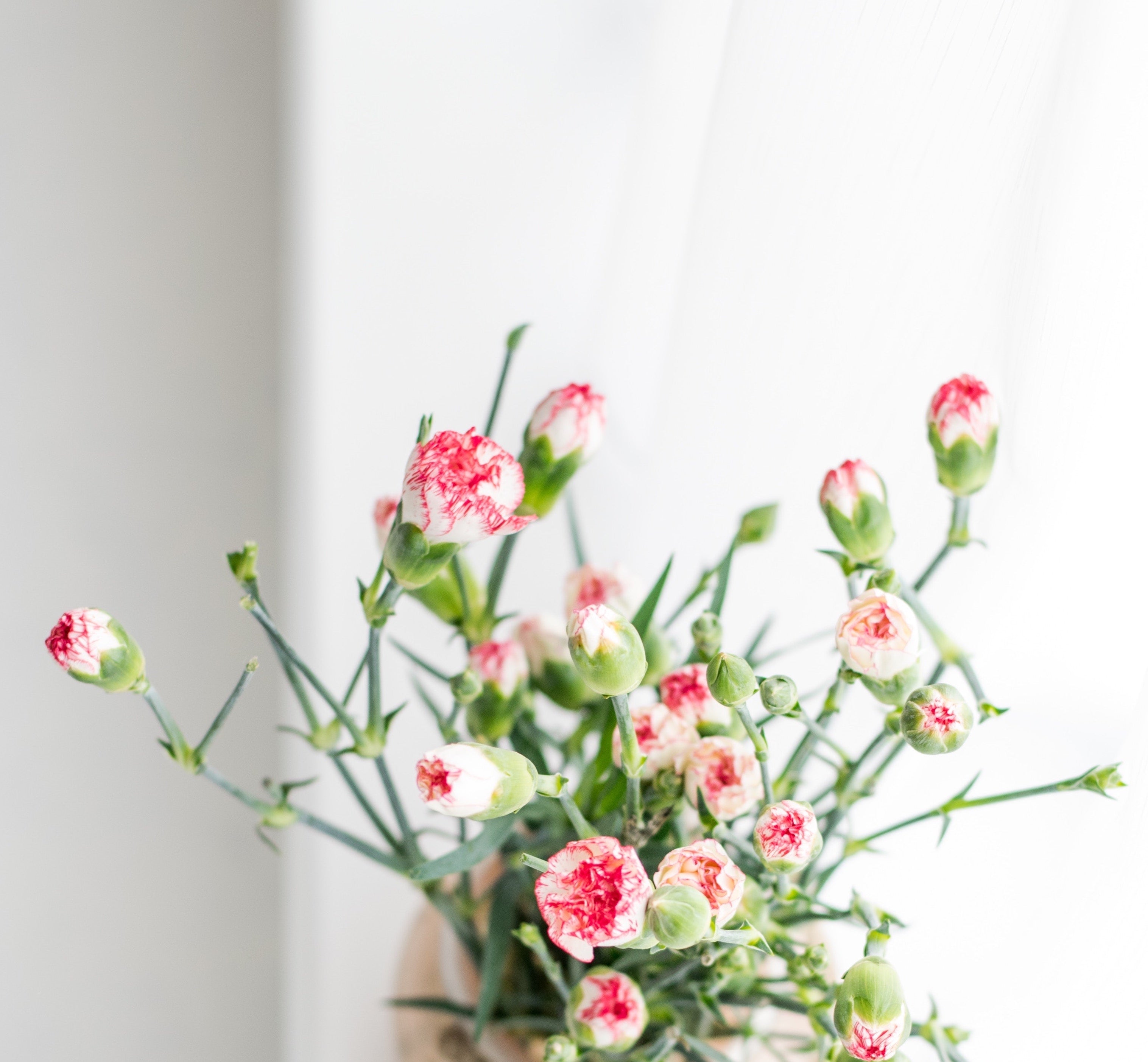
All About Carnations
The gesture of presenting someone with flowers is appreciated by one and all. All of us have also been on the receiving end, at various occasions. While flowers are a gift that everyone loves and appreciates, have you ever thought what every flower means and signifies? Each flower comes with a special meaning rooted in the history. With this piece, we help you delve deeper into the stories behind the idyllic Carnations.

With a history of no less than two thousand years, these flowers have become the source of debate for most scholars. Some say that their name comes from the word “corone” or “coronation” referring to its use in Greek ceremonial crowns, while others suggest it comes from the Latin word “carnis” meaning flesh (referring to the flower’s original pink hue) or “incarnacyon” meaning incarnation (referring to incarnation of the god made flesh – the human body).
Carnations are often referred by their scientific name “Dianthus” given by the Greek botanist, Theophrastus. Some scholars also propose that the word “Dianthus” comes from two Greek words – “dios” referring to god Zeus and “anthus” meaning flower. We can, therefore, say that the name "Dianthus" literally translates to “The Flowers of God”.
What are the different types of carnations?
These can be primarily classified into the following three types:
Large flowered carnations: The carnations with one large flower per stem.
Spray carnations (Mini Carnations): The carnations with plenty of small flowers.
Dwarf flowered carnations: The carnations with several small flowers on one stem.

What is the socio-cultural significance of a carnation?
It is suggested that carnations first appeared at the spot where Virgin Mary’s tears fell as Christ carried the cross. Hence, carnations have come to signify a mother’s undying love.
When to give Carnations as gifts?
Carnations have stood the test of time and can be presented at various occasions.
- Valentine’s Day
- Teacher’s Day
- St. Patrick’s Day
- Mother’s Day
- First Anniversary
- Birthdays
- January Births
- Funerals
What do different colours of Carnations symbolise?
While carnations in general are associated with love, fascination, and distinction, different colours of this flower evoke different feelings.
White: Pure love and good luck
Light Red: Admiration
Dark Red: Love and affection
Pink: Gratitude/Mother’s love
Purple: Capriciousness
Yellow: Disappointment and dejection
Striped: Regret and refusal
How to arrange carnations and pair them with other flowers?
A bunch of carnations really look the best by themselves and don't require another flower family to be brought in to make them complete. But if you wish to, then we admit that carnations are remarkably accommodating flowers and pair well with almost everything. Since their colour palette is enormous, you may pair carnations with a wide range of colourful roses, baby’s breath, chrysanthemum, lilies, mums, hydrangeas and wax flowers.

How to grow and care for carnations at home?
- Carnations can be grown from the cuttings taken from the suckers formed around the base of the stem, the side shoots and main shoots before they start flowering. For a strong plant, one must use cuttings from the base of the plant. Cuttings can be done during the winter months and potted in sand where they shall stay until the spring, generally the month of April as the temperatures have warmed up and the ground is in a seemingly decent state for planting.
- For better growth of a glower, good quality sandy loam soil is a prerequisite and a few hours of full sunlight each day is desired. Carnations must be watered regularly and the soil be kept moist but over watering must be avoided to prevent foliage from turning yellow and root rotting.
- Secure the foliage from direct heat of the sun.
- Remove spent flowers for continuous blooming and keep constant checks on soil quality and irrigation aspects.
- Pinching and disbudding must be optional processes but essential for enhancing the growth of the plant.
- When plucking the carnations, one must be certain to remove the stem and leave three to four nodes at the base.
How to preserve carnations?
“To the Elysian shades dismiss my soul, where no carnation fades” – Alexander Pope
Since carnations have a long vase life, they do not lose their aesthetic value and yield maximum even after being cut. However, like every other flower, carnations too fade as time passes by. Here are a few steps one may take to lengthen the life of carnations.
- Cut your carnations when the flower head is in full bloom and dry (two to three inches down the flower head). This usually happens at mid-day.
- Pick a shoe box and line it one inch deep with 20 Mule Team Borax.
- At the top of the shoe box, hold your bloom upright using a spoon and fill the borax in between the petals (as much as possible)
- Gently turn the flower head and put it face down in the shoe box on top of the borax. The flip must be quick so as to lose as less borax, from between the petals, as possible.
- Mercifully pour borax over your bloom until it is entirely covered making sure that none of it is left visible.
- Close the container tightly and secure the edges with a tape if you wish. The container must be stored in a dark and dry place for a span of 7 to 10 days.
- Post the stipulated time, you may open the container and let out some of the borax by titling the shoebox. Gently lift the carnation from the borax, holding its stem.
- Clean your blossoms with a soft makeup/artist brush and they are ready for use.

Some Fun Facts:
- Carnations are the national flowers of Slovenia and Spain.
- They are the second most popular after roses.
- Carnations are native to Eurasia and the first ones in the United States were dispatched from France to Long Island in 1852.
- In 1904, Ohio adopted carnations as its official state flower by honouring late President William McKinley with his beloved scarlet carnation
- Yellow, orange, red, and green carnations do not exist in the nature. They are created using edible colours.
- Since carnations are edible, many restaurants and food bloggers use them to decorate cuisines, adding aesthetic value to their food.
Carnations at the Flora

If you are already yearning for all those colourful carnations, we can help you with a bunch of 12 blooms that would look great in a medium to large size vase.
Get a monthly subscription or order a bunch, as you may like it.


